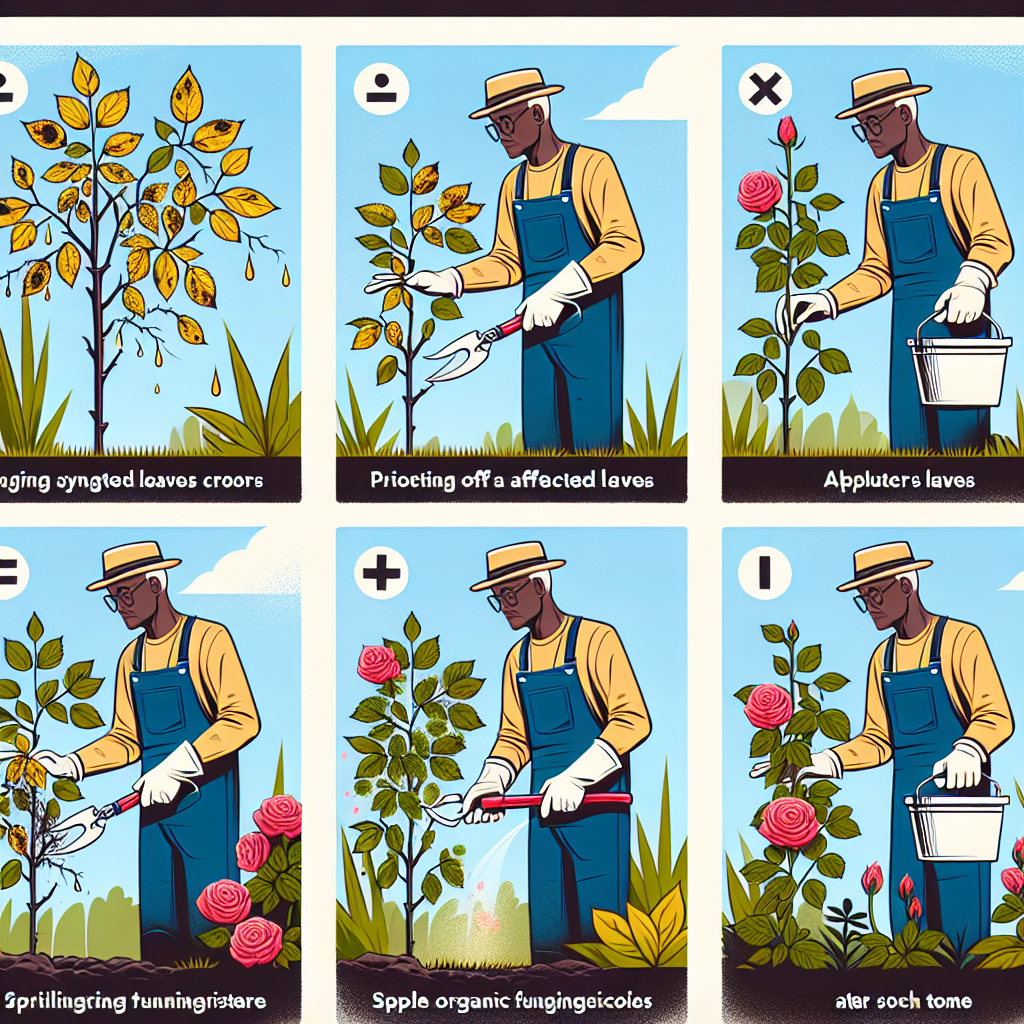
How to treat blight on roses
Understanding Blight on Roses
Roses are often considered the queen of the garden, bringing beauty and fragrance to our landscapes. However, one of the most common woes of rose enthusiasts is the dreaded blight. This fungal disease can severely affect the health of your rose plants, leading to unsightly brown leaves and stunted growth. In this article, we will explore how to recognize blight, its causes, and effective methods for treatment.
What is Blight?
Blight refers to a range of plant diseases that cause rapid and extensive damage to leaves, stems, and flowers. In roses, two primary types of blight are most commonly encountered:
- Black Spot (Diplocarpon rosae): Characterized by dark black or purple spots on the leaves, leading to yellowing and early leaf drop.
- Botrytis Blight (Botrytis cinerea): Often seen in wet conditions, this type can cause a gray mold that affects blooms and foliage.
Signs and Symptoms of Blight
Detecting blight early can significantly improve your chances of saving your roses. Here are some of the common signs to look for:
- Dark spots or patches on leaves.
- Wilting foliage.
- Stunted growth.
- Mold growth, particularly in humid conditions.
- Discoloration or decay of flowers and buds.
Causes of Blight on Roses
Understanding the causes of blight is crucial in devising an effective treatment strategy. Several factors can contribute to the onset of this disease:
- **Excessive moisture**: Prolonged wetness on foliage can create a perfect environment for fungal growth.
- **Poor air circulation**: Crowded planting can lead to higher humidity levels.
- **Nutrient imbalances**: An excess of nitrogen can promote tender growth that is susceptible to disease.
- **Compromised plants**: Weak or stressed roses are less capable of resisting disease.
How to Treat Blight on Roses
If you discover that your roses are suffering from blight, swift action is essential. Here’s a comprehensive guide on how to treat blight on roses effectively:
Step 1: Remove Affected Leaves and Flowers
Immediately remove all visibly affected leaves and flowers. This helps to minimize the spread of the disease. Use sterilized pruning shears to prevent contamination.
Step 2: Improve Air Circulation
Enhancing air circulation around your roses is vital. This can be achieved through:
- Proper spacing between plants (at least 18-24 inches apart).
- Pruning to open up the structure of the plant.
- Removing any surrounding debris or weeds that trap moisture.
Step 3: Adjust Watering Methods
Watering is a critical factor in managing blight. Here are some tips:
- Water in the morning to allow foliage to dry out quickly.
- Avoid overhead watering; opt for drip irrigation instead.
- Ensure that soil drains well to prevent waterlogging.
Step 4: Apply Fungicides
When blight is present, fungicides can be highly effective. It's best to apply these early in the season as a preventative measure. Here are some options:
- **Chlorothalonil**: A broad-spectrum fungicide effective against a range of fungal diseases.
- **Propiconazole**: This systemic fungicide penetrates the plant tissue and offers prolonged protection.
- **Neem oil**: A natural option that can also deter pests.
Always follow the manufacturer’s instructions regarding application rates and safety precautions.
Step 5: Fertilize Wisely
Proper fertilization can help strengthen your roses, making them less vulnerable to disease. Choose a balanced fertilizer and follow these guidelines:
- Test your soil to identify nutrient deficiencies.
- Avoid using too much nitrogen, which can promote weak growth.
- Apply fertilizers during the growing season, typically in early spring.
Step 6: Monitor and Maintain
After treatment, vigilant monitoring is essential. Check your roses regularly for any signs of blight returning. It’s a good practice to:
- Inspect the undersides of leaves, where spores often reside.
- Continue to maintain proper watering and spacing.
- Be cautious about environmental conditions; avoid planting in overly humid areas.
Preventive Measures for Future Protection
Prevention is key when it comes to fungal diseases like blight. Implementing the following strategies can save you from future headaches:
Choose Resistant Varieties
Some rose varieties are bred specifically for resistance against common diseases, including blight. Consider planting these resistant varieties to minimize your chances of encountering blight:
- Knock Out Roses
- Flower Carpet Roses
- Graham Thomas
Practice Crop Rotation
In larger gardens, consider practicing crop rotation, avoiding planting roses in the same spot for consecutive seasons. This can help break the cycle of disease.
Maintain Healthy Soil
Healthy soil translates to healthy plants. Regularly amend your soil with organic matter to promote beneficial microorganisms, improving soil structure and nutrient availability.
Conclusion
Dealing with blight on roses can initially seem daunting, but with the right knowledge and action, you can effectively manage and treat the disease. By being proactive with preventive measures, dedicating time to maintenance, and employing effective treatment strategies, you’ll ensure that your roses remain healthy and beautiful for years to come. Remember, vigilance is your best ally when it comes to protecting your garden.
```By Guest, Published on September 22nd, 2024